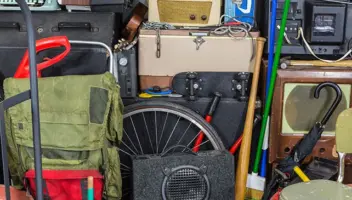LeafFilter and Home Contingencies

Maybe you’re thinking of buying a house within the next year. Or perhaps you’ve found what appears to be your dream home, and you’re working on finalizing the sale. Maybe you just want to understand home buyers’ expectations so that you’re prepared for selling your own home. Whatever the case may be, you’re in the right place. In this article, you’ll learn what a home contingency is, how they work, and why LeafFilter should be at the top of your list of contingencies. Let’s dive in!
What is a home contingency?
A home contingency is a period in which either the seller or the buyer can back out of, or negotiate, the contract based off of certain criteria. There are many different types of contingencies, so for the purposes of this article, we’ll only focus on home inspection contingencies, and repair contingencies.
What is a home inspection contingency?
A home inspection contingency is just the way it sounds – it’s a way to ensure the buyer isn’t hit with any nasty surprises during the home inspection that they’d be stuck repairing. It gives the buyers the option to back out of the contract or negotiate a solution. If the sellers refuse to repair the issue, or reduce the selling price of the home so the buyers have money to take care of the issue themselves, the buyers would typically then elect to back out of the deal. Repair issues are identified by a licensed home inspector. A general inspector may not be qualified to inspect areas of the home that require expertise (like your roof, foundation, or plumbing for instance), but they’ll be able to give advice about which experts to hire, if need be.
How does a home inspection contingency work?
A home inspection contingency, also known as a due diligence contingency, is worked into the contract for the home, and is agreed upon by both the buyer and the seller prior to any further transactions. They may be handled differently depending on your location, as laws can vary by country, state, and even city. Your home inspection contingency will typically have an expiration date by which a final decision must be made. If a buyer fails to make a decision by this date, or if any part of the contract is not met, the buyer risks losing their down payment.
If a home inspection contingency sounds risky to you, consider the other side of things. If you, as the buyer, fail to identify as issue with the home prior to purchase – say the foundation is cracked – you’ll end up paying for the repairs out of pocket down the road. If you didn’t know you needed to save money for the repair because it went unidentified, this can put you into a significant amount of debt, on top of the new mortgage. It’s much better to play it safe, and have a contingency in place. All you have to do is be conscious of the deadline, and uphold your end of the deal in order to keep your deposit.
What can you do if the inspection comes back with issues?
If your inspector finds any issues, you can add an addendum to your contract called a repair contingency.
What is a repair contingency?
A repair contingency is an addition to the contract that outline all the repairs the seller needs to make, or the amount that needs to be deducted from the buying price, in order for the buyer to finalize the sale. This Contract addendum can be further negotiated to meet both parties’ needs.
What can you include on a repair contingency?
An experienced real estate agent can help you determine what should go on your repair contingency. The items you list on your contingency can be used as a negotiating tool. But be warned: The more contingencies you add to the list, the less appealing your offer becomes to the seller. Keep your list of contingencies to the essentials.
Can LeafFilter be added to a repair contingency?
Yes, but be careful. If your inspector identified issues with the gutter system, or any damages as a result of clogged gutters, you have a solid case for the installation of LeafFilter. However, if you simply add it on to the contract with no reasoning, be prepared for the seller to reject or negotiate this part of the contract. Know the reasons for getting LeafFilter to build a strong case for keeping it in the contact. Showing proof of roof or foundation damage, mold issues, or an infestation of water insects can all help you defend the inclusion of LeafFilter on your repair contingency.
LeafFilter makes a great addition to any home – new or old. Request your free, no obligation LeafFilter estimate today, to have a worry-free home tomorrow.
The information in this article does not serve as legal advice. Please contact your personal lawyer and/or real estate agent to determine the best course of action for your individual case.



